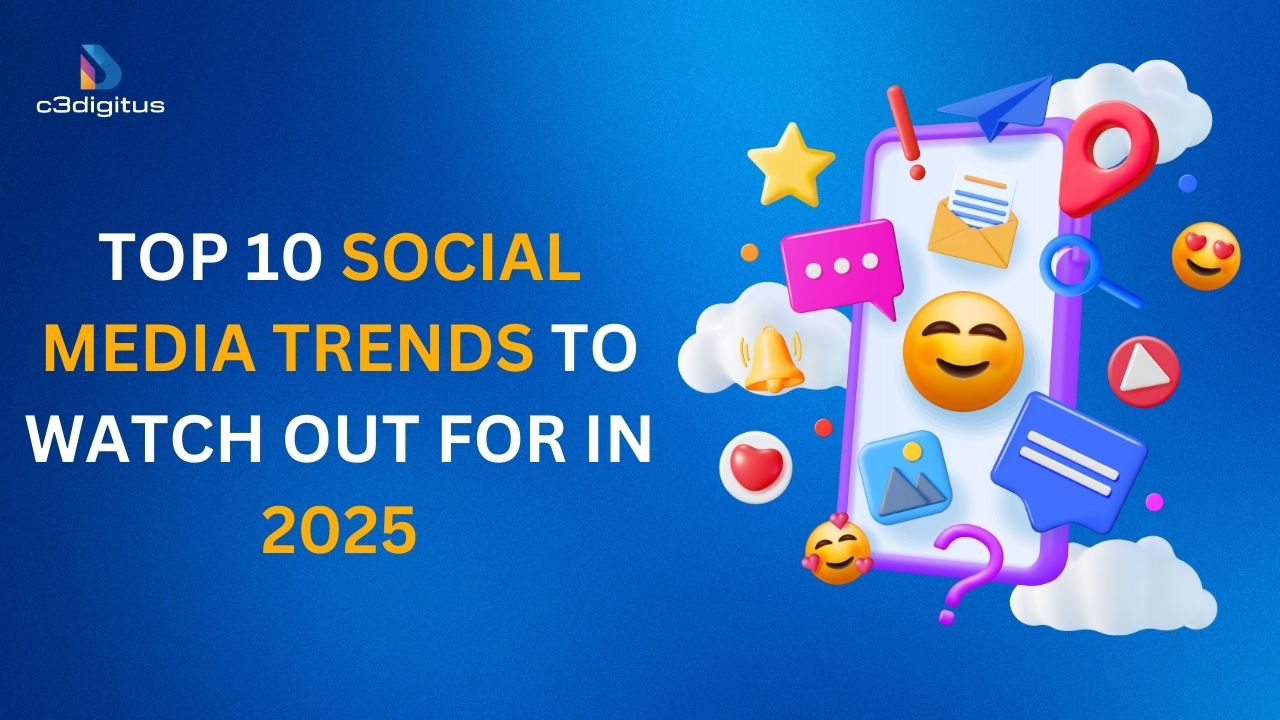Everybody witnesses the advancement of social media year after year. There’s always a time frame that provides something new that revolutionizes the way we communicate, shop or simply unwind. People and companies need to constantly adjust to these trends, especially if they’re just beginning to understand what social media marketing really entails.
In this article, we will highlight several social media trends that may emerge in the next few years and highlight which to keep an eye on. Each of these trends has distinct aspects that will help avoid boredom and take part in shaping the modern world.
1. Short-Form Video Content
Among other social media trends, short-form video content needs no introduction. Platforms like TikTok, Instagram Reels, and YouTube shorts have become immensely popular worldwide. These are entertaining videos, usually less than a minute long. It’s clear why people like short clips—they’re quick to watch and easy to share. They are straightforward, affordable, and effective in combining emotions and getting people’s attention. Such videos are perfect for promotional purposes, offering an engaging way to connect with the public.
Ways to use short-form video:
- Make videos that are fun but still show what you’re selling.
- Include trends such as popular songs, dances, or challenges to reach a larger crowd.
- Keep it simple – choose videos that people can understand in seconds.
2. Shopping Through Social Networks
A trend that is quickly sweeping the world of social networks is social commerce—the ability to purchase products directly from social media. Platforms such as Instagram, Facebook, and TikTok now feature these shopping tools that enable users to shop for items present in posts, stories, and ads.
Why is this phenomenon, social commerce, so widely used? It makes the shopping experience much easier and faster. How? All of the activities – browsing a shop, finding information about a product, and placing an order – can be done within a single application.
We often get inspired by what we see on social media, whether it’s an outfit, a gadget, or something trending, and end up searching for similar items on Amazon or other shopping sites. With social commerce, that extra step disappears. You can buy what you love right when you see it. This rise in social shopping is creating huge opportunities for businesses.
This kind of convenience reduces the barrier for companies that are trying to sell their goods directly to their customers.
Shopping through social media:
- Facebook, Instagram, and any other social platform can be used to create a shop.
- Have clickable posts or ads that will help promote products.
- Use the social influence of people and trends to endorse the products informally.
3. Augmented Reality (AR) and Virtual Reality (VR) Experiences
It’s true that AR and VR are changing the way we interact on social media platforms. AR allows users to form realistic perceptions of the images presented to them. For example, Instagram allows users to view clothing virtually using filters to try-on before making a purchase. The experience is augmented through the use of a VR-imaging tool, as it creates an interactive environment made up of objects that once only existed in imagination.
AR allows brands to create virtual fitting tools for items like glasses or makeup which customers can use. VR is gradually maturing and it has some capabilities that can create memorable interactions with customers.
How to use AR/VR:
- Create AR filters for your social media network that emphasize your brand’s product.
- Employ the use of VR in virtual events, tours, and experiences to enhance the customers’ interest.
4. Authenticity and ‘No Filter’ Content.
Customers are looking for authenticity at all times. There are rising numbers of users who wish to consume content that is minimally edited and staged. This trend can be seen with the growth of BeReal, a new social media that focuses on posting raw images.
More and more customers are becoming less interested in ‘perfect’ images. They would rather see the real side of a brand, a social influencer, or a celebrity. ‘Social’ simply means being real and it helps brands earn trust and get closer to their customers.
How to maintain authenticity:
- Post content that shows how a product is made.
- Don’t edit too much – try to make the content as raw as possible.
- Post who you are and what your brand stands for.
5. The Progression of Influencer Marketing
Influencer marketing continues to be a strong pillar. However, nothing remains the same today as it used to be. Instead of focusing on one or two influencers with millions of followers, brands are now working with niche influencers, micro-influencers (follower count: 10,000 – 50,000), or nano-influencers (follower count: 1,000 – 10,000). These kinds of influencers tend to have a more engaged audience and hence higher rate of engagement.
The average user is also better able to relate to a smaller influencer because they are much more down to earth and less artificial in their presentation. For brands, this change of direction means partnering with social media influencers who share the same values with them and have meaningful relationships with their followers.
How to use influencer marketing:
- Engage micro or nano influencers as they have good engagement levels.
- Avoid one-off promotions since they lack authenticity, it is important to build long-term partnerships.
Brands are also turning inward, encouraging their own team members to become micro-influencers and represent the brand authentically. If you’re exploring that route, here are some ways to get employees more active in your social media marketing.
6. Ephemeral Content and Short-Form Stories
The other concept that is also rapidly developing is the concept of ‘ephemeral content’ which refers to content that is short-lived and eventually vanishes. A good example of this would be 24-hour stories. Such type of content is appealing to viewers because it is current, original, and minimally edited.
This type of content is also useful for businesses because it is simple, audience-oriented and helps businesses to inform the audience about relevant news.
How to use stories:
- Share information about the latest news, updates, products, or content.
- Let your audience interact with polls, questions, or other features.
- Highlight important stories as part of your profile to make them accessible for a longer duration.
7. Community Content & Niche Communities
Communities are becoming ‘clans’ as people increasingly wish to find others who have similar beliefs. Communities on platforms such as Discord, Reddit, and Facebook Groups allow people to join smaller networks built around specific activities, industries, or interests.
For brands, this presents an opportunity to foster loyalty and engagement by building a community around their product or service. Belonging, however, isn’t solely tied to products and brands; it is also reflected in community content, where users engage in relevant and meaningful conversations.
How to build a community:
- Create a space where your audience is motivated to engage with your brand. Develop interest in a group or community page so followers can discuss topics of mutual interest.
- Highlight user contributions and participation to make members feel valued.
- Keep the community active and growing by maintaining a consistent posting schedule.

8. Voice and Audio Content Boom
In recent years, the consumption of audiobooks, podcasts, and live audio sessions has increased. Platforms like Clubhouse and X (formerly Twitter) Spaces allow users to take part in live discussions remotely. Audio content is perfect for people with a busy lifestyle since it doesn’t require full concentration, opening possibilities for listening while doing other activities, but why? Find this amazing explanation by beyondwords – Reasons why people listen to audio content.
How to use audio content:
- Organize Q&A or audio panel events where people can fully participate.
- Start a podcast that targets a particular niche or audience.
9. User-Generated Content (UGC) As An Engagement Strategy
User-generated content (UGC) is any content created by the consumer about your brand such as a review, or photo or video using your product. It is effective since people usually trust other people more than they trust ads.
Brands that ask for user-generated content can create a collection of real, relatable marketing material. This also helps build trust with followers who see that real people like the brand.
How to generate UGC:
- Host campaigns or challenges where users post photos or videos of themselves using your product.
- Republishing or reposting UGC content with permission on the brand’s page.
- Create a branded hashtag to make it easier for your audience to join in.
10. Privacy, Data Security and Digital Balance
As data privacy becomes an increasingly important concern, users are seeking privacy options offered by platforms. With the growing focus on digital well-being, many users are taking breaks from social media.
Why it matters: Users are more likely to trust brands that prioritize data security and respect digital well-being.
How to respect privacy and wellness:
- You must inform your audience on how you will use their data and make sure you comply with data protection legislation.
- Encourage healthy social media habits and limit over-posting.
To make the most of these trends, it’s equally important to understand where your audience spends time. Choosing the right social media platform can make or break your strategy.




